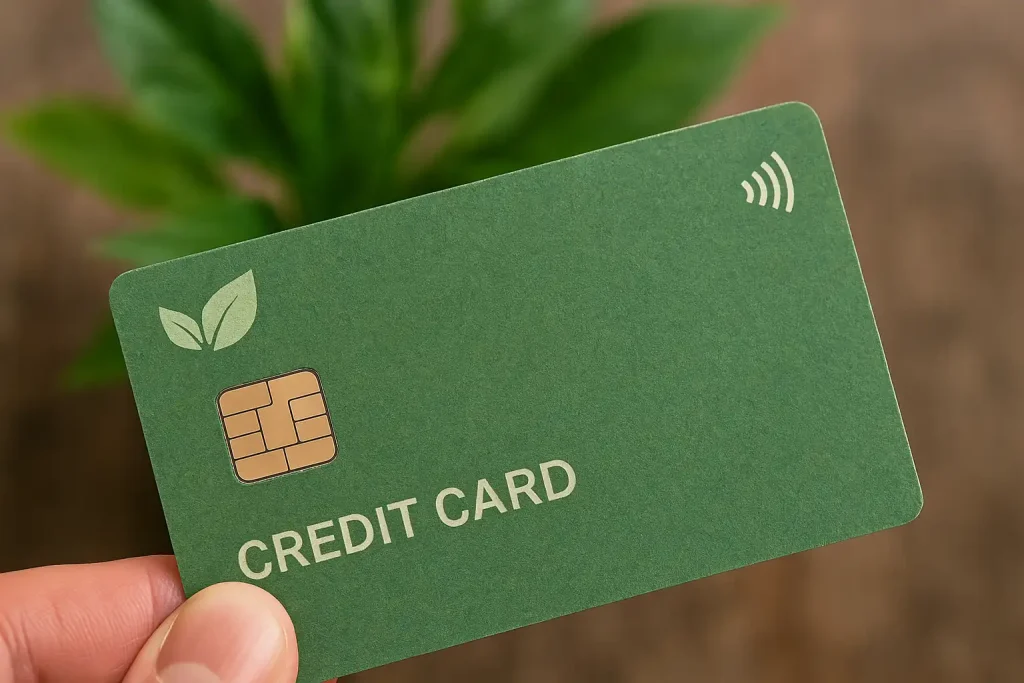In recent years, eco-friendly credit cards have become a pivotal topic among South African banks, which are pioneering sustainability initiatives in the banking sector. As environmental awareness grows, financial institutions are realizing the importance of reducing their ecological footprint and offering environmentally conscious options to their customers.
The surge in interest for eco-friendly credit cards is driving banks to rethink their current offerings and strategize effectively for the future. With an increasing number of consumers valuing sustainable practices, banks are focusing on presenting more than just a financial product—they offer a conscientious choice that aligns with customers’ values.
How South African banks are embracing sustainability

South African banks are actively implementing initiatives to promote eco-friendly credit cards as part of a broader commitment to sustainability. Many banks are taking significant steps to ensure their credit cards are made from recycled or biodegradable materials that have less environmental impact. They are also educating consumers on energy-efficient spending habits and the benefits of a sustainable lifestyle.
To implement these changes, banks are collaborating with environmental organizations and engaging in community outreach programs to raise awareness. This collective effort indicates a shift in the financial industry towards prioritizing the planet’s health while meeting customer demands for greener options. By leading such initiatives, banks position themselves as proactive players in environmental advocacy.
Innovative approaches to card production
One key area where eco-friendly credit cards are making a difference is in the materials used for card production. Traditional plastic cards contribute significantly to pollution, whereas their eco-friendly counterparts are often crafted from recycled plastics or biodegradable substances. This not only cuts down on waste but also aligns with a circular economy model.
In addition to material innovations, some banks are incorporating digital solutions to minimize physical card usage. Mobile wallets and digital transactions are encouraged to complement the physical eco-friendly credit card offerings, thus advancing environmentally responsible banking. This dual approach effectively reduces reliance on non-reusable resources while enhancing convenience and security for users.
Benefits of eco-friendly credit cards for consumers and banks
Adopting eco-friendly credit cards yields multiple advantages for both consumers and financial institutions. For consumers, using such cards is a straightforward way to support sustainable practices, offering a sense of personal contribution to environmental preservation. Moreover, some banks offer exclusive rewards and incentives for using eco-friendly options, further enhancing customer engagement.
Banks, on their part, enjoy the benefits of strengthened customer relationships and enhanced brand reputation as eco-consciousness becomes a critical factor in consumer decisions. Additionally, these initiatives can lead to cost savings in the long run due to reduced waste management and material expenses, ultimately contributing to a bank’s overall operational efficiency.
Practical steps for consumers
Consumers interested in adopting eco-friendly credit cards can take several practical steps to get started. First, they should explore and compare offerings from different banks, focusing on those that emphasize sustainability in their products. Understanding terms, rewards, and any green initiatives associated with the card is crucial.
Once a suitable option is chosen, customers can maximize their eco-friendly credit card usage by opting for mobile payments whenever possible and staying informed about any green-focused promotions. Participating in bank-led environmental programs can also amplify their contribution to a sustainable future.
Conclusion: The future of banking and sustainability
The rise of eco-friendly credit cards marks a transformative period in the banking industry, highlighting a growing alignment between financial services and environmental stewardship. South African banks are at the forefront of this movement, illustrating how traditional banking practices can evolve to meet modern ecological needs.
By continuing to invest in sustainable alternatives and fostering eco-conscious customer behaviors, banks can significantly impact the global push towards sustainability. As more people adopt eco-friendly credit cards, the collective efforts of individuals and financial institutions can pave the way for a healthier planet and a more sustainable future.



